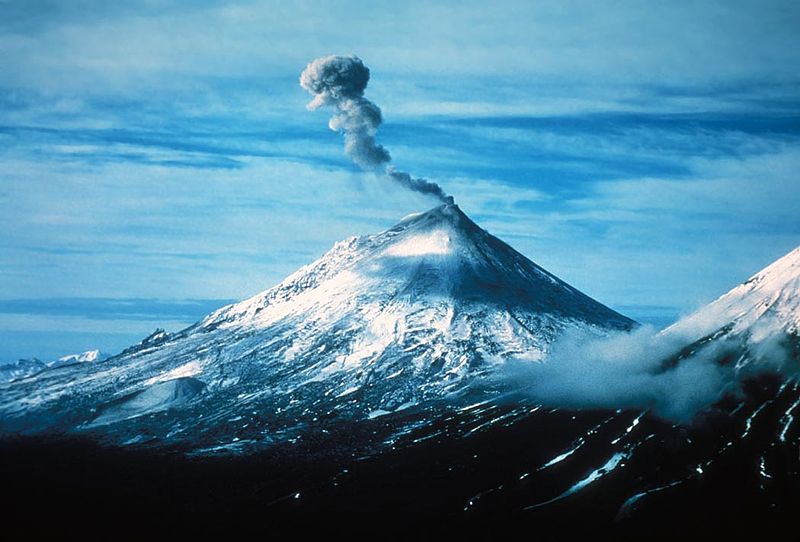Alaska’s Pavlof Volcano has been recording increased levels of seismic activity, leading the Alaska Volcano Observatory to raise the active volcano’s threat level.
Mount Pavlof, located on the southwestern end of the Alaskan peninsula, has been producing more steam emissions and other seismic activity. The volcano, is one of the most active in the state, with over 40 recorded eruptions, according to the observatory. Pavlof last erupted in May, and before that in March – an eruption that shot ash plumes into the air as high as 40,000 feet above sea level, the Christian Science Monitor reports.
Volcano eruptions can occur with little to no warning. Scientists at the observatory are now continuing to monitor Pavlof’s activity closely. But geophysicist David Schneider did tell radio station KUCB that these are normal levels of volcanic activity.
“Pavlof is one of those volcanoes that can erupt without very much in the way of precursory activities,” he stated.
It’s very easy for the magma to arise in the volcano and make it out. So even subtle signs of unrest we think it is prudent to increase our alert level.
The eruption in May was the first time in 20 years that significant ash-fall was recorded on the ground, according to local news outlets. Nelson Lagoon, a small town of 39 people located 55 miles northwest of Pavlof, was hit with one-eighth to two-thirds of an inch in ash. Residents told the Dispatch News that the ash fall turned everything black.
The March eruption, on the other hand, led to the cancellation on multiple flights, reported the Associated Press. Pavlof is 625 miles southwest of Anchorage, an area that has a high volume of air traffic.
When the 8,261-foot volcano erupted in March, it emitted an ash cloud that rose to 37,000 feet, which then spread through winds over 400 miles east into Alaska.
Alaska Airlines was forced to cancel 41 flights throughout the state, affecting some 3,300 passengers and crew members.
Volcanic ash can be dangerous to flights. When Alaska’s Mount Redoubt erupted in December 1989, it spewed up an ash cloud 150 miles high that cause two engines of a KLM flight to fail. The flight, which was carrying 231 travelers to Anchorage, fell two miles before the pilots were able to restart the engines and land safely.
























